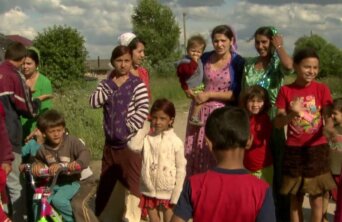- About
- Topics
- Story
- Magazine
- In-Depth
- Picks
- Opinion
- News
- Donate
- Signup for our newsletterOur Editors' Best PicksSend
Read, Debate: Engage.
Up to 900 Roma of a community in Central Russia's Penza region were forced to leave their homes following a conflict with the local residents.
One group of the displaced Romas has moved to the city of Volgograd, the other one to Astrakhan, both in southern Russia on the border with Kazakhstan. Conflicts between the members of the Roma communities and Russian residents are not uncommon, with the authorities tending to turn a blind eye to them.
In 2006 in Volgograd, the destination of some refugees from Penza, local mobs ambushed Roma's settlement, killing an 80-year-old woman and a 40-year-old man. In 2017 in Tula, regional capital 200 km from Moscow, Romas confronted the riot police twice when the mayor's office ordered to raze a settlement. Local authorities claimed the settlement was illegal despite the fact that people had been living there for over 50 years. Facing firm reluctance of the Gipsies to abandon their homes, the Tula authorities cut off their gas pipeline and electricity forcing families to move out of the town.
The Head of Astrakhan Caspian-Eurasian research centre Andrei Syzranov is certain the influx of several hundreds of Romas to the region will cause no troubles there. "In Astrakhan region, there are some 50 thousand of Romas. So another 500 make no difference", he says. Syzranov adds that Astrakhan has harboured Romas fleeing from Central Asia and Eastern Europe since the start of the 21st century. "We haven't witnessed any conflicts with Romas as far as I can remember. The Romas live in their communities and have little contact with the outside population, while the Romas who live separately have been well integrated into the local life and so feel no prenotion", he notes. Director of the ethnic Roma TV channel in Moscow Yuri Cheremush is convinced that all so-called ethnic conflicts are actually rooted in disputes over land property. "In Soviet times, when land property issues had not been legally defined precisely because everything belonged to the state, Romas built their settlement on the best land plots available. These lands remain in high demand. So if some people with money and access to local officials want to acquire those land plots, the authorities launch a worked out instruments to squeeze Romas out", he says.
As a rule of thumb, the authorities try to dismantle Romas' homes as squatter developments. Formally, the reason is correct: most of the families have never attempted to legalise the property they lived in for half a century. "They just don't believe their houses are legally non-existent", Cheremush stresses. If that approach fails for some reasons – for instance, the residents hired lawyers and formally registered their ownership rights – the claimants try to provoke "common people unrest" against Roma settlers like it had happened in Penza earlier this week.
"Claims that Gipsies sell drugs and kidnap children are as groundless as the claims that Jews make their matzoth using blood of Chrisitan babies", Cheremush says. When an ethnic minority lives separately, that can annoy the majority, be it in Russia, Hungary or Czech Republic, head of the Ethnic sociology centre in the Russian Academy of Science Loekadia Drobizheva agrees.
She cites Roma's traditions as predominantly hand labour in agriculture, female provocative dresses, refusal to assimilate and, above all that, strict subordination within the community, which cause irritation of the majority ethnic groups. "In a Roma community, its chief is a baron. If he made a decision, it becomes a law for everyone. However, that decision could contradict the laws and tradition of the host country", she explains. If a leader makes a wrong decision, that automatically casts a shadow on the entire community.
"If a baron is a responsible and sensible person, his community lives in peace with the outside world. But if a baron happens to be a criminal-inclined man, he makes his fellows sell drugs or steal gas from pipelines. That renders the entire community cast-offs", Drobizheva says.
